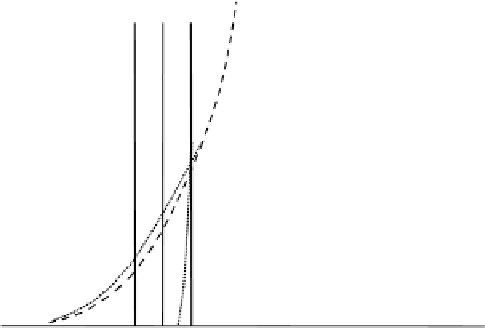Environmental Engineering Reference
In-Depth Information
varying between several 100 kW and the multi-megawatt range only present slip
from 0.5 to 1 % /7-6/ and are thus almost as inflexible as synchronous generators.
Optimum power coefficient
Synchronous generator
150
13 m/s
125
12
Rated power
100
11
75
10
50
9
Direct current
generator
8
25
7
6
Asynchronous generator
5
4
0
Rotor speed
Fig. 7.12
Power rotational speed mapping of a typical wind energy converter including
generator characteristic curves (see /7-3/, /7-4/, /7-6/)
However, by incorporating appropriate resistors into the rotor circuit, the slip is
intentionally enhanced, but heat losses are increased and efficiency is reduced.
Direct incorporation of the resistors into the rotor circuit triggers airflow and thus
provides cooling. Since the air sucked in is saline, particularly at coastal sites, this
design is prone to corrosion of the winding insulation. Currently, research is being
conducted on outer rotor resistors which allow for a closed design of the actual
generator.
A further possibility to influence the slip of asynchronous generators is the so-
called double loaded asynchronous generator. Slip capacity is fed into or obtained
from the grid by a frequency converter, whereas the stator is directly connected to
the grid and the rotor is connected via the frequency converter. A modern insu-
lated gate bipolar transistor allows for dynamic slip control and thus enables vari-
able numbers of revolutions and idle power generation. A hybrid solution is an
asynchronous generator in the form of an oversynchronous static Kraemer system
(cascade conversion system). Slip power is unidirectional and can only be fed into
the grid (Table 7.1) /7-6/.
Asynchronous generators also serve for motor start-up of wind energy convert-
ers. They are usually less expensive, more robust and require less maintenance
than synchronous generators.
Wind direction yaw mechanism.
This system component serves for adjusting
the machine nacelle, and thus the rotor, as exactly as possible to the respective
wind direction. The wind direction yaw mechanism joins the machine house (na-








Search WWH ::

Custom Search